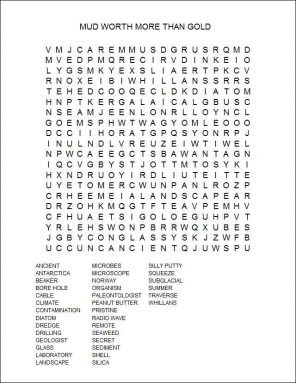Mud worth more than gold
It cost a true fortune to retrieve, but this ancient muck from far below Antarctica’s ice promises to tell a riveting tale about Earth’s ancient climate
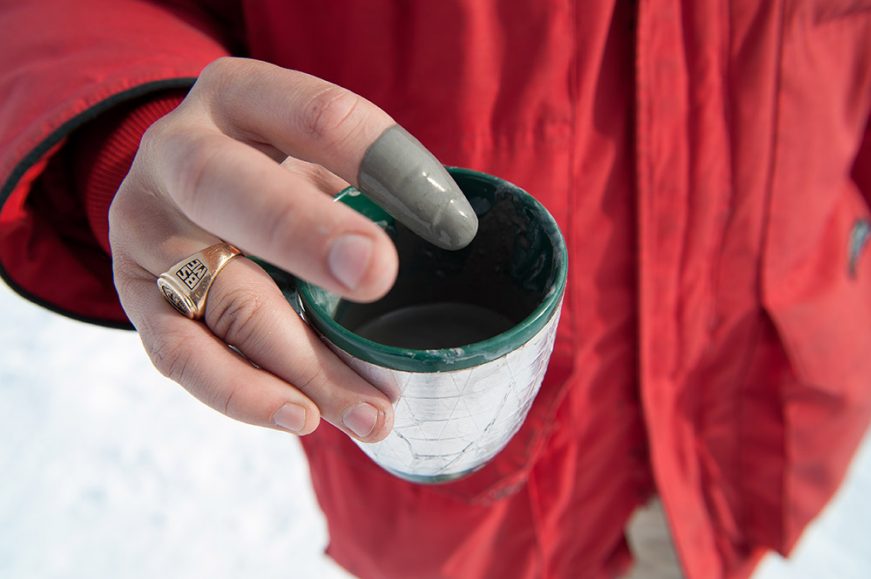
Mud coating this scientist’s finger was retrieved just hours earlier from the bottom of Lake Whillans. Its water lies a half-mile under a blanket of solid ice in Antarctica. Earlier this year, scientists finally drilled into the lake, whose water has not seen the light of day for at least 120,000 years. This gray-brown mud from its bottom will reveal secrets of the continent’s living past and climate.
© JT Thomas
By Douglas Fox
Whillans Ice Stream, Antarctica — Reed Scherer and Ross Powell have studied mud from all over the world. It is different in each place. Mud from the Sulu Sea near Borneo is as smooth as cream cheese. Mud from Chesapeake Bay, in the mid-Atlantic United States, clings to your skin like peanut butter. Okefenokee Swamp mud, from Georgia, stinks with the rotting goo of plants and animals that died long ago. You can tell a lot about a place by reading its mud. But sometimes that mud is hard to come by.
At 8 a.m. on Jan. 30, 2013, Scherer and Powell stood nervously outside in a cold wind. The two men had picked a strange place to look for mud. In every direction, pristine white ice stretched out as far as the eye could see. This remote spot in Antarctica was just 600 kilometers (375 miles) from the South Pole.
Antarctica’s ice covers an area nearly twice as large as the lower 48 U.S. states. Its depth where Scherer and Powell were standing was equal to nine Statues of Liberty stacked on top of each other. There was not a speck of brown on the surface of the ice. But deep below lay the real Antarctica — a hidden continent of rock, water and mud. Far below their boots was Lake Whillans, a body of water no human has ever seen.
Scherer and Powell had traveled to the bottom of the world from Northern Illinois University in DeKalb. Scherer is a micropaleontologist, which means he studies the tiny fossils of things that lived long ago. Powell is a geologist who studies the thick layers of mud and gravel that glaciers leave behind as they move. After years of waiting, they finally hoped to extract samples of mud from the floor of this lake buried beneath the ice.
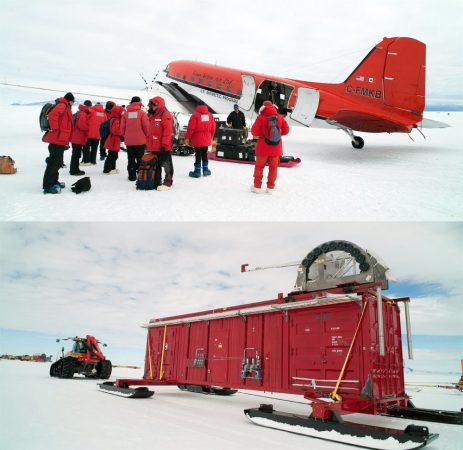
This muck could help answer important questions. It might reveal how stable Antarctica’s ice has been over hundreds of thousands of years. It might even help scientists predict how quickly the region’s ice will shrink as Earth warms. But scientists also hoped to find evidence of life. Any organisms in the lake’s mud and water might offer clues to what types of life, if any, could exist on distant planets or moons also blanketed in ice.
This was one of the most remote, inhospitable sites that the two scientists had ever visited in search of mud. And there were no guarantees of success. But before the day was over, Scherer and Powell would touch an ancient, distant world — and bear the broad grins to prove it.
Oh, the anticipation
Over the previous week, engineers had slowly, carefully drilled through the ice. Lots of ice. They had to create a hole 800 meters (half a mile) deep to reach Lake Whillans. Scherer and Powell knew that the lake had a muddy bottom because when the drill first came back up, they found tantalizing traces of mud smeared on it. Now, the two men hoped to grab enough of that mud to do some proper scientific studies. They lowered a contraption with three plastic pipes down a metal cable. They hoped to jam those pipes into the lake bottom and pull up plugs of mud.
But all was not going according to plan. Twice the plastic pipes had gone down. Twice they surfaced empty. No one knew why.
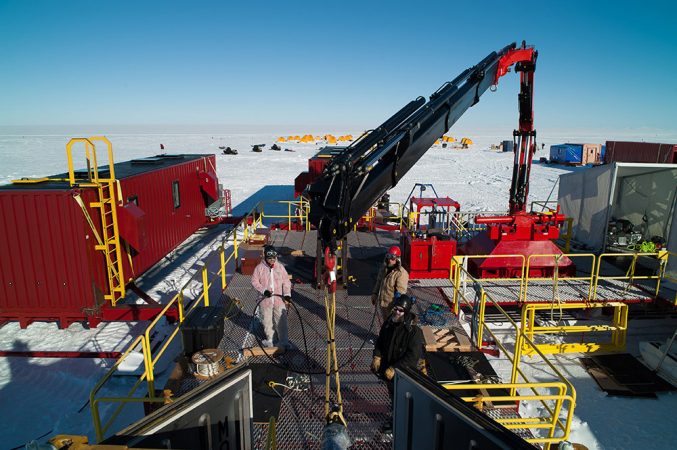
Undaunted, Scherer and Powell had sent the pipes for the third time on an hour-long descent down the narrow hole to the lake.
Now the pipes were coming up again. In anticipation, Scherer and Powell leaned over a metal rail, staring down the hole. The cable crackled and popped as it inched up and out of the hole. Flecks of ice splintered off the line as it coiled back onto a motorized spool.
“Ten meters… seven meters… five meters,” called out the spool operator. He was counting off the last bit of cable before the cores of mud were supposed to rise into view. “Do we have a visual yet?”
“No,” said Powell. He was anxious. Ice drilling is inexact. Lots of expensive scientific gear has been lost in holes, wedged forever in the ice.
Imagine reeling in a fishing line, hoping for a fish — but fearing the hook might simply have snagged a tin can or clump of seaweed. That is how Scherer and Powell felt. A lot was at stake.
Hidden world
The dark world under Antarctica’s ice is one of the least-known places on Earth. Much of what is known comes, ironically, from high above. Airplanes have pointed their radar instruments down at the ice to survey the seemingly endless fields of sparkling whiteness. Those fields are known as ice sheets.
The radars bleep out radio waves. After rippling down through the ice, those waves bounce back up from the continent beneath. Those echoing radio waves allow scientists to see through the ice. As the plane flies in a straight line, it maps the ups and downs of the subglacial landscape deep below. Those measurements have revealed unseen mountain ranges and more than 200 lakes.
Scientists have also drilled through the ice here and there to sample, directly, what the radar has found. After a few hours or days, those holes always squished shut again. But what the researchers retrieved before that happened has inspired deep questions about how long the ice has been there — and what might happen if it vanished again.
It’s precisely these questions that have puzzled, and rattled, Scherer since he was 30 years old, back in 1987. That’s when he first got his hands on several plastic bags of greenish-brown mud from Antarctica.
Scientists had accidentally stumbled onto that mud while drilling into an ice sheet. They had wanted to study the lowest layers of the ice. But they drilled too far: When they pulled their drill up, it was caked in frozen mud.
The site was 200 kilometers (125 miles) from where Lake Whillans would later be found.
As a paleontologist, Scherer studies ancient fossils. In his case, they’re microscopic ones. After sifting the Antarctic mud to remove gritty sand, he smeared what was left onto a glass slide. Then he viewed it under a microscope. Squinting through the eyepiece, he saw something beautiful.
Dozens of curvy, crystal-clear shapes stared back at him. Some were covered in spikes. Others appeared dotted with holes, like the pattern atop a saltshaker. The images resembled lovely pieces of museum art. Yet Scherer recognized them as relics of life. These were the shells of diatoms — tiny sea creatures — made of silica. Silica is the clear mineral that makes up glass.
To find diatom shells in mud below thick Antarctic ice had big implications. Diatoms are like plants: They need sunlight to photosynthesize and grow. So they could have grown only when this portion of West Antarctica was free of ice. Indeed, this region must have held a shallow sea.
Most shells in this mud sample were 10 million to 20 million years old. This came as no surprise. Scientists already knew that throughout much of that time the world had been warmer and Antarctica’s ice sheet smaller. But as Scherer looked at mud from a second hole, he saw something that surprised him deeply.
A few of its diatoms were much younger. They seemed less than 600,000 years old. Some might be only 120,000 years old. They were species that weren’t around any earlier than that.
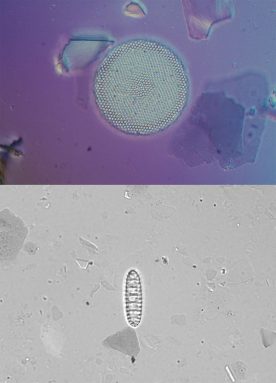
If true, that would be shocking. It meant that much of West Antarctica’s glacial cover was far younger than anyone had thought. A swath of ice larger than France must be much less permanent than glacial experts had assumed. If the ice now covering this part of Antarctica melted, it would raise global sea levels by up to five meters (16 feet). From London and New York to Miami, Jakarta and Shanghai, many of the world’s coastal cities would suffer devastating flooding. And Scherer’s diatoms now hinted that such a catastrophic melting of the West Antarctic Ice Sheet could be far more likely than climate scientists had thought.
Scherer published his findings in 1998. And some scientists found them hard to swallow.
Experts came up with other possible explanations for the young diatoms. Maybe winds had blown them onto the top of the ice, after which they melted down to where Scherer found them.
Living creature
To probe all of this further, Scherer has wanted to get more mud. Those samples could tell him the last time the West Antarctic Ice Sheet collapsed, meaning that it had suddenly vanished.
“That’s something I’ve been trying to address through my whole career,” he notes. “Scientists had known it had collapsed, but not precisely when that was.”
So Scherer was thrilled at the chance to grab another precious sample of mud earlier this year.
The drill punched into Lake Whillans on January 27. At 11 p.m., 30 scientists and drillers gathered in a wooden hut to make final plans. Slawek Tulaczyk stood and spoke first. The group’s ice expert, he comes from the University of California, Santa Cruz. He noted that the hole, no wider than a large pizza, would gradually freeze shut from the intense cold.
Another problem might also occur, he notes. Most people see ice as solid and hard, like glass. But when the ice is more than a few hundred meters thick, as it was here, it behaves in strange ways. The immense weight pressing down from above causes the ice to squish and ooze like Silly Putty. As a result, the walls of the hole might actually squeeze shut.
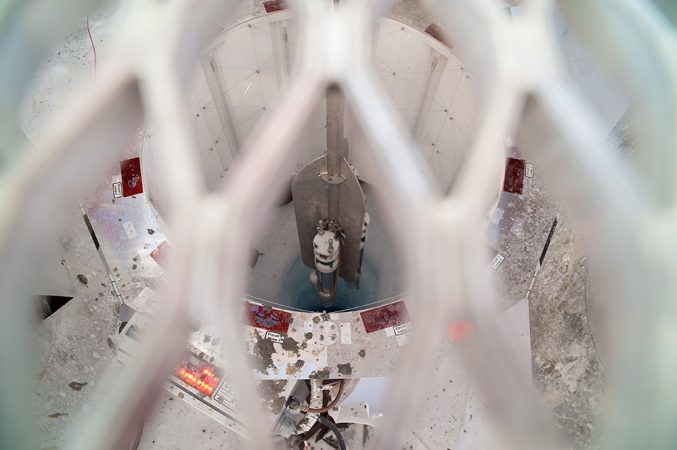
“This borehole is a living creature,” Tulaczyk told the group. “It’s changing over time.” And so began a race against the clock to pull up as many samples of lake water and mud as possible before the hole locked shut.
First, a team of biologists worked nonstop for 20 hours bringing up bottles of water. Fine mineral dust rendered this liquid the color of honey. Within hours, the scientists had samples of the fluid under a microscope. And they found living cells. Each teaspoon of water contained about a half-million of them.
By a narrow margin, those single-celled microbes were the first direct evidence of life in a subglacial lake in Antarctica. (See “Piercing a buried polar lake” to learn more.) A few weeks later, in March, a Russian team would report finding microbes in samples of frozen water from Antarctica’s buried Lake Vostok.
After the biologists at Lake Whillans pulled up their samples of lake water, Scherer and Powell had their turn to probe for mud. On their second try, the equipment bumped into something 760 meters down the hole. It stopped there, only a few agonizing meters short of the lake.
So crews lowered the drill back down the hole to widen it. This ate up 18 hours of precious time. The Antarctic summer was drawing to a close. The team would have to begin leaving within three days — whether Scherer and Powell got their mud or not. So when the mud grabber went down the hole for a third time on the morning of January 30, no one knew how many more tries would be possible.
Frozen goo
At 8:24 a.m., the spool operator counted off the last few meters of cable coming up. “Three and a half meters… one meter.”
People gathered around. Powell and Scherer leaned over the hole. Then something dark came into view.
“We have sediment!” shouted Powell. The onlookers cheered. The thing that emerged from the hole resembled a mudcicle: The dripping glops of brown goo had frozen solid during the journey back up the hole.
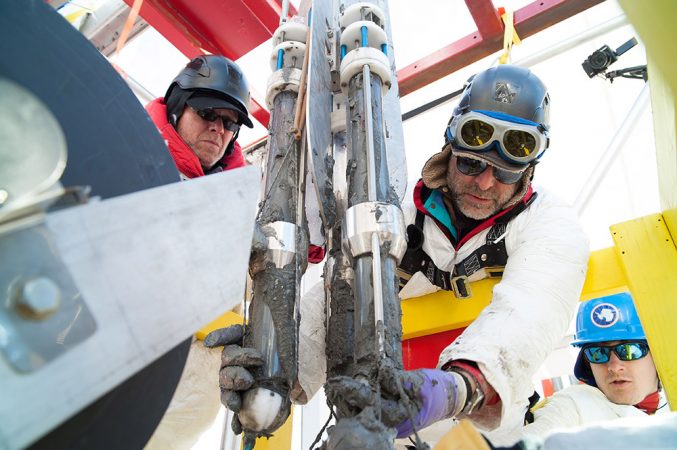
As scientists lifted the plastic pipes and carried them into a laboratory, some of the mud splattered around. People rubbed it between their fingers. It was gritty, full of sand that glaciers had mixed in as they bulldozed over the hidden face of Antarctica.
Shattered glass
Scherer’s job looking at diatoms from Lake Whillans will not be easy. He realized this as he looked at those first, limited samples of lake mud from the drill head under a microscope. Sure enough, he saw diatom shells. But they were not the perfect museum art that he had seen in samples from other locations. Instead, imagine that the beautiful diatom shells had been hit by a train and dragged on and on. That is what glaciers do. The dragging had shattered every microscopic diatom shell.
Scherer nudged the slide around, looking for a shell that wasn’t so badly crushed. “I’m a glutton for punishment,” he said, “working on this nasty stuff.”
A person like Scherer who studies diatoms must learn to recognize hundreds of different types. Different species live in different environments. So those in a dab of mud can give clues to the climate in which they had once lived.
At last, Scherer found a shell that he recognized. Its flat disk looked like a piece from a checkers game, but dotted with holes. Members of its species are still found elsewhere, he noted. “They’re pretty common in Norway today.” The one dredged up from Lake Whillans and now under his microscope was not alive, however. When it had lived, West Antarctica was probably about as warm as the coastal waters off Norway are today. Lake Whillans would have had no ice covering it, back then, except for perhaps a topcoat layer just one meter (one yard) or so thick during winter.
Rare youngsters
Within days of extracting the mud from Lake Whillans, the scientists had packed up the samples and sent them along to laboratories in the United States. Back in northern Illinois, Scherer’s team is now hard at work analyzing the mud. The scientists will have to peer at thousands of diatom shells before a clear picture of past environments begins to emerge. Most of the shells will be more than 10 million years old. But the scientists will keep scouting for signs of youngsters — diatoms closer to 500,000 years old.
Scherer is working with great care. He has bought a new set of laboratory beakers and flasks to hold the precious bits of mud. “I don’t use old glassware for this stuff since the concentration of diatoms is so low,” he says. A few stray microscopic diatoms from an older project might taint his results, and “I just want to make sure there’s no contamination,” he explains.
Retrieving this mud cost “many, many millions of dollars,” Scherer told Science News for Kids, “making it worth more than gold — a lot more.” But its greatest value lies in the story it promises to unveil.
Its diatoms will shed more light on when West Antarctica was last ice-free. This, in turn, could hint at how stable the region’s ice sheet has been over time. Knowing that is especially important now that rising global temperatures are melting glaciers and other major reservoirs of ice.
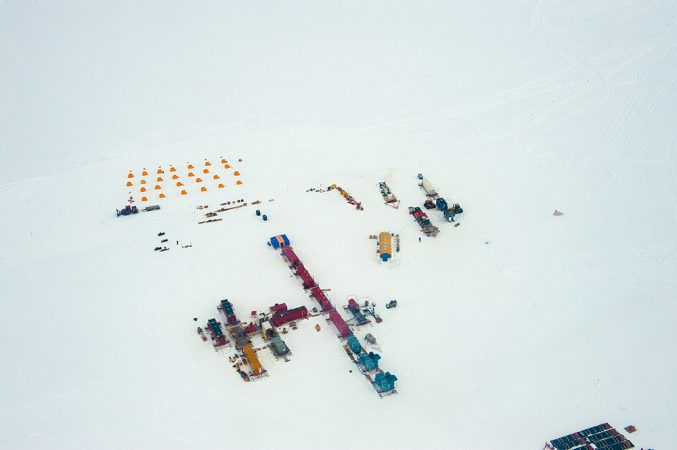
The world under Antarctica’s ice still holds many secrets. Two decades ago, no one realized that a complex network of rivers — dotted with lakes — crisscrossed this continent. Now that Lake Whillans has finally been breached, its mud could provide many clues to Antarctica’s long and private life.
Power Words
Antarctica A continent mostly covered in ice surrounding the South Pole. Ice sheets cover about 98 percent of this southernmost continent.
cell The smallest, microscopic unit of life. It consists of watery fluid surrounded by a membrane or wall.
core A cylinder bored or drilled out of something, such as mud, rock or ice. In geology, cores allow scientists to sample layers going back in time. A core of mud can be obtained by driving a hollow pipe down into the material; when the pipe is lifted, the mud stays inside.
diatoms Tiny, ocean-dwelling organisms similar to algae that are made of no more than a few cells. Diatoms have shells made of silica, a compound also used in glass. They live like plants, using sunlight to turn carbon dioxide into sugars.
echo The return of a wave after it has bounced off a surface. The echo of sound waves can be heard. Radio waves too can bounce off surfaces that reflect them. That principle is used in radar (see below).
fossil A physical remnant of something that lived long ago. Examples of fossils include dinosaur bones, the impressions of seashells in rocks and the preserved shells of ancient diatoms.
glacier A slow-moving river of ice hundreds or thousands of meters deep. Glaciers are found in mountain valleys and also form as parts of ice sheets.
ice sheet The broad blanket of ice, most of it kilometers deep, that covers most of Antarctica. An ice sheet also blankets most of Greenland.
microbe Living things too small to see with the unaided eye. These include bacteria, some fungi and many other organisms such as amoebas.
microscope A scientific instrument used for looking at things, like diatoms or single-celled microbes, too small to be visible to the unaided eye.
photosynthesis The use of sunlight by plants, diatoms and some other organisms as an energy source to convert carbon dioxide into sugars that serve as food.
radar (radio detection and ranging) A technique to throw off radio waves and then detect the echo of any waves that are reflected back. Radar can be used to detect moving objects, such as airplanes. It can also be used to map the shape of land — even if covered by ice.
radio waves A type of electromagnetic radiation. It is similar to visible light, but at a lower frequency. It is used to transmit radio and television signals; it is also used in radar.
sea level The overall level of the ocean over the entire globe when all tides and other short-term changes are averaged out.
silica A compound, composed of the elements silicon and oxygen, that makes up glass and the glasslike shells of diatoms.
subglacial Underneath a glacier or ice sheet. Subglacial lakes, for instance, lay hundreds to thousands of meters beneath Antarctica’s ice sheet.
Word Find
(Click here to enlarge puzzle for printing)
